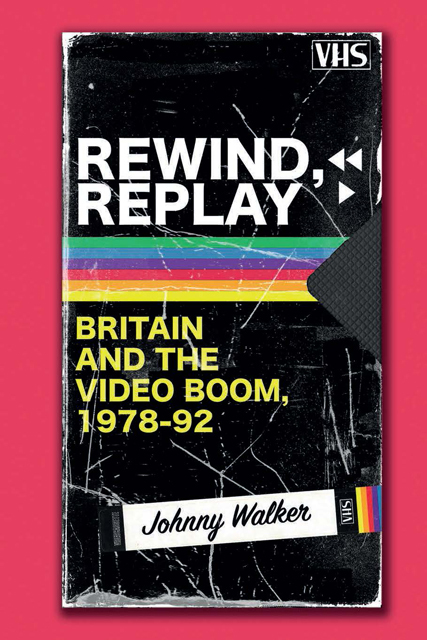Book contents
- Frontmatter
- Contents
- List of Figures
- Acknowledgements
- Introduction: Rewind, Replay
- 1 We’ve Got It Taped
- 2 Shrugging Off the Recession
- 3 Threats and Benefits
- 4 Regulation and Adaptation
- 5 Independent Spirit vs Corporate Muscle
- Conclusion: Video Legacies
- Select Bibliography
- Select Film/TV/Videography
- Select Periodicals
- Index
4 - Regulation and Adaptation
Published online by Cambridge University Press: 18 November 2022
- Frontmatter
- Contents
- List of Figures
- Acknowledgements
- Introduction: Rewind, Replay
- 1 We’ve Got It Taped
- 2 Shrugging Off the Recession
- 3 Threats and Benefits
- 4 Regulation and Adaptation
- 5 Independent Spirit vs Corporate Muscle
- Conclusion: Video Legacies
- Select Bibliography
- Select Film/TV/Videography
- Select Periodicals
- Index
Summary
[L]ife was so much easier when Joe Public gazed in awe at racks of films he’d never heard of but would queue up and rent anyway.
Fil Adams-Mercer, ‘The demise of leasing – and another welcome trend’, Video Business (17 March 1986)
The above quotation, from a video journalist in 1986, embodies the plight of many of Britain's independent distributors in the mid-1980s. The previous chapter has shown how the emergence of the major companies, and many smaller distributors in 1982 and 1983, let to market saturation and, consequently, many companies going bankrupt. The period that followed was one of a rapid change for the video business, which saw new legislation brought in to police the video business in the wake of the video nasties panic, adaptive measures taken by distributors in attempts to assure their longevity in the business, and the emergence of new markets.
The chapter begins with a consideration of the oft-discussed Video Recordings Act 1984: new legislation bespoke to the video business. Second, it explores some of the strategies adopted by independent distributors that enabled them to outstep the fate of bankruptcy, which met so many of their competitors. Some companies, it is revealed, strove to shape their corporate identity at this time in a manner akin to major Hollywood studios and communications firms, while others saw longevity in power-selling budget releases. Third, it considers the development of the video sales – or ‘sell-through’ – market.
Major changes
In scholarship and popular discourse, the mid-1980s are viewed as a turning point for the British video industry, as they witnessed the implementation of regulatory measures in response to growing concerns surrounding piracy and the video nasties scandal. As discussed in Chapter 2, pirated videocassettes were believed at the beginning of the 1980s to account for 80 per cent of material available. Within twelve months of the establishing of the Federation Against Copyright Theft (FACT), the organisation had seized 30,000 illegal tapes. By the summer of 1984, rates of video piracy had reportedly dropped by two-thirds.
For those working in the video business, FACT was an unprecedented success, and provided a down-trodden industry with much-needed good news, given that the press reports, on account of the video nasties panic, continued to be so damning.
- Type
- Chapter
- Information
- Rewind, ReplayBritain and the Video Boom, 1978-1992, pp. 133 - 172Publisher: Edinburgh University PressPrint publication year: 2022



